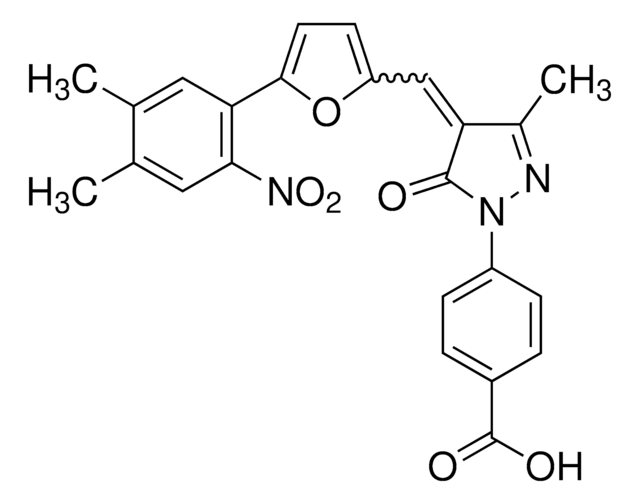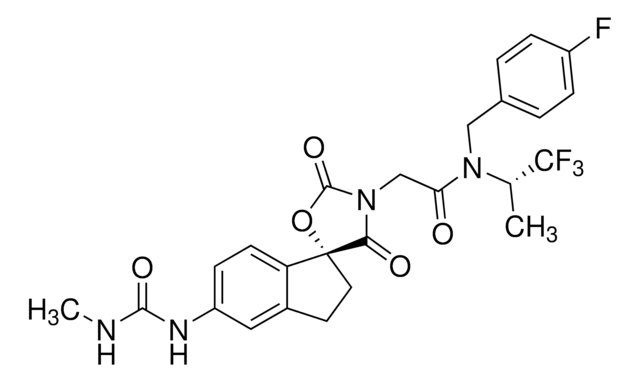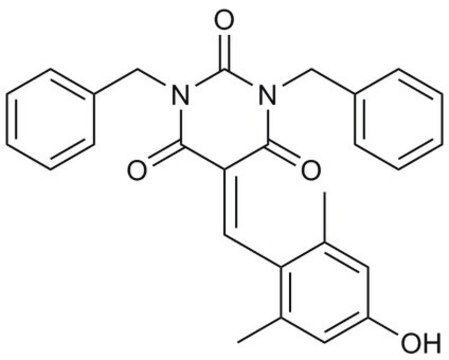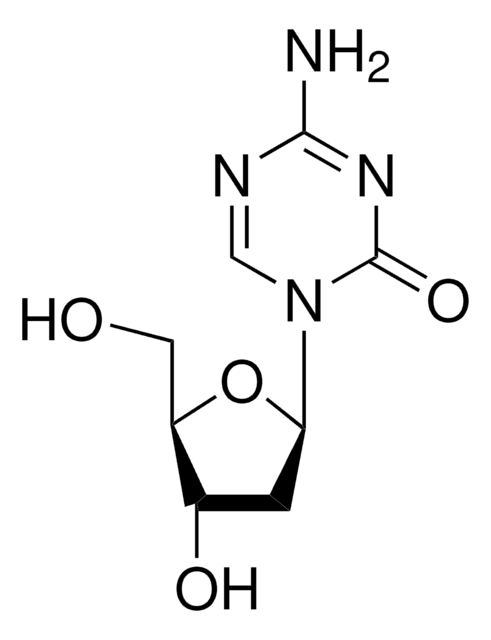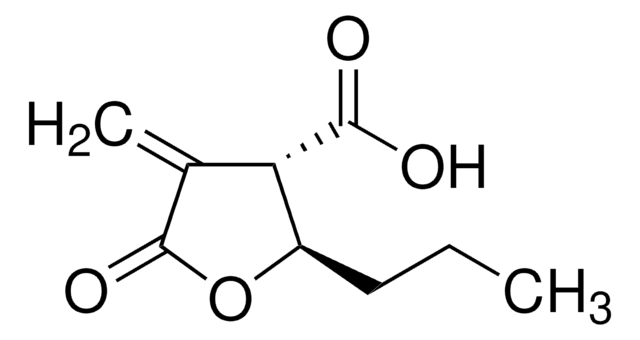382113
C646
≥99% (sum of isomers, HPLC), solid, histone acetyltransferase p300 inhibitor, Calbiochem®
Sinônimo(s):
Histone Acetyltransferase p300 Inhibitor, C646, 4-(4-{[5-(4,5-dimethyl-2-nitrophenyl)furan-2-yl]methylidene}-3-methyl-5-oxo-4,5-dihydro-1H-pyrazol-1-yl)benzoic acid, p300/CBP Inhibitor IV, Histone Acetyltransferase Inhibitor V, HAT Inhibitor V
About This Item
Produtos recomendados
Nome do produto
Histone Acetyltransferase p300 Inhibitor, C646, Histone Acetyltransferase p300 Inhibitor, C646, CAS 328968-36-1, is a cell-permeable, reversible inhibitor of p300/CBP HAT (Ki = 400 nM). Competes with acetyl-CoA for the p300 Lys-CoA binding pocket.
Nível de qualidade
Ensaio
≥99% (sum of isomers, HPLC)
Formulário
solid
fabricante/nome comercial
Calbiochem®
condição de armazenamento
OK to freeze
protect from light
cor
brick red
solubilidade
DMSO: 50 mg/mL
Condições de expedição
ambient
temperatura de armazenamento
−20°C
InChI
1S/C24H19N3O6/c1-13-10-20(21(27(31)32)11-14(13)2)22-9-8-18(33-22)12-19-15(3)25-26(23(19)28)17-6-4-16(5-7-17)24(29)30/h4-12H,1-3H3,(H,29,30)/b19-12-
chave InChI
HEKJYZZSCQBJGB-UNOMPAQXSA-N
Descrição geral
Embalagem
Advertência
Reconstituição
Outras notas
Informações legais
Código de classe de armazenamento
11 - Combustible Solids
Classe de risco de água (WGK)
WGK 3
Ponto de fulgor (°F)
Not applicable
Ponto de fulgor (°C)
Not applicable
Certificados de análise (COA)
Busque Certificados de análise (COA) digitando o Número do Lote do produto. Os números de lote e remessa podem ser encontrados no rótulo de um produto após a palavra “Lot” ou “Batch”.
Já possui este produto?
Encontre a documentação dos produtos que você adquiriu recentemente na biblioteca de documentos.
Nossa equipe de cientistas tem experiência em todas as áreas de pesquisa, incluindo Life Sciences, ciência de materiais, síntese química, cromatografia, química analítica e muitas outras.
Entre em contato com a assistência técnica